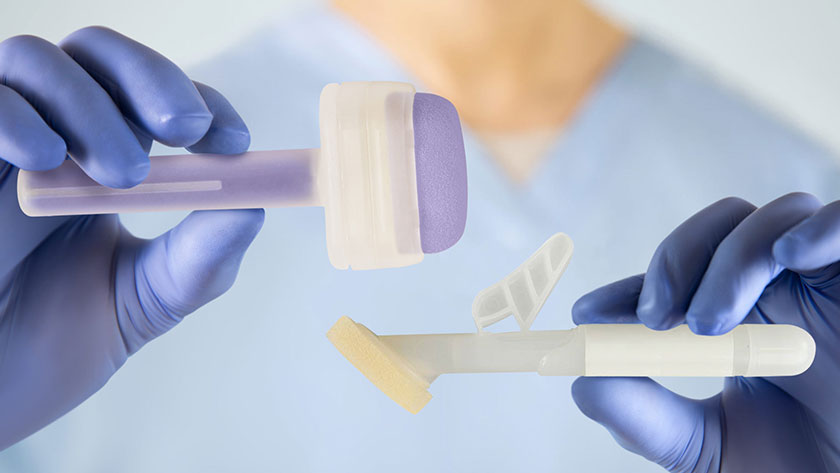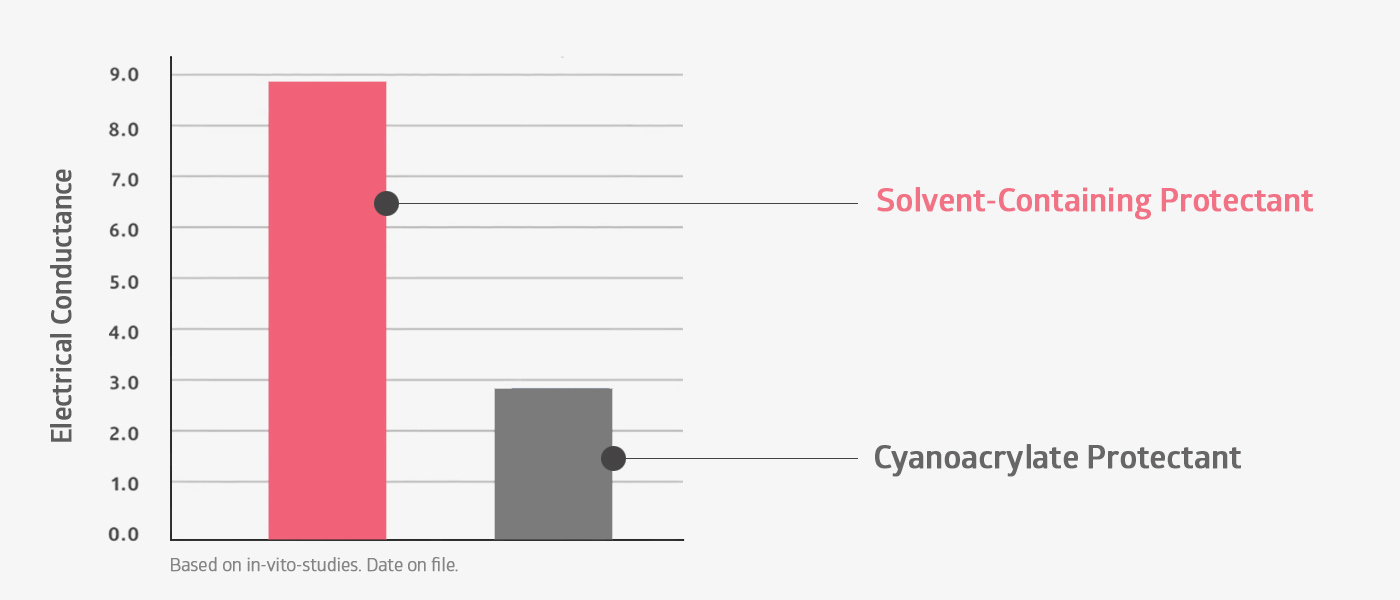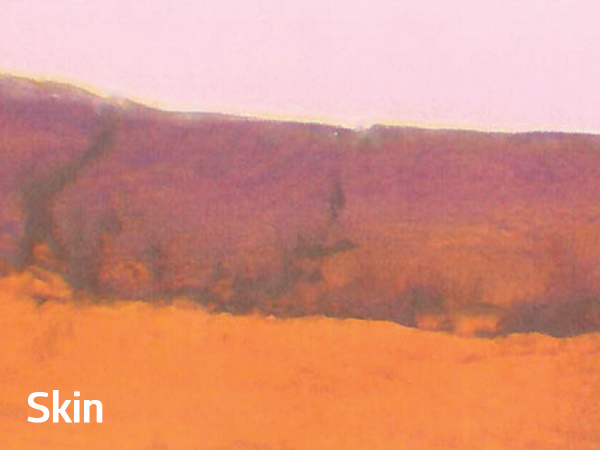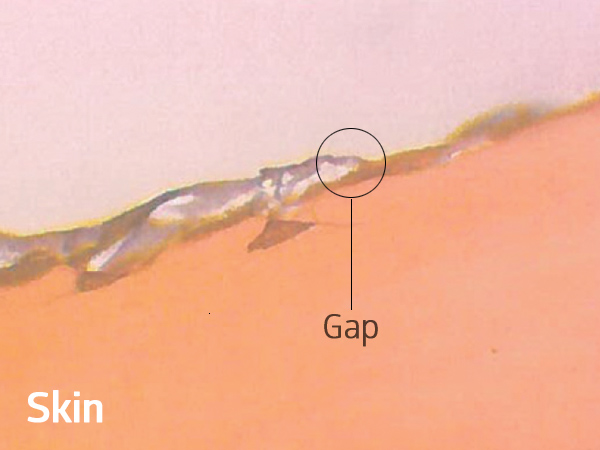Managing incontinence-associated dermatitis: Compare two skin protectants to see why ingredients matter

One of the common types of moisture-associated skin damage (MASD) is incontinence-associated dermatitis (IAD). IAD can occur when skin is in contact with urine and stool for prolonged periods.
45.7%
of incontinent acute care patients with IAD¹
17%
Incidence of IAD in critical care²
IAD can lead to skin inflammation, irritation and breakdown, and can be uncomfortable for the patient. If untreated or treated poorly, IAD can also make skin more sensitive to further damage. That’s why it’s important to have the right tools to protect your patients’ skin.
Comparing skin protectants
Here, we take a look at how two skin barriers stack up when it comes to managing incontinence associated dermatitis.
Marathon XL
Cyanoacrylate: 100%
Bond with skin:* No visible gaps between skin and barrier
Indication for reapplication: Easier with violet tint
Neatness: Non-sticky
*Based on in vitro testing
3M Cavilon Advanced
Cyanoacrylate: 5%-10%
Bond with skin:* Visible gap between skin and barrier
Indication for reapplication: Harder with transparent color
Neatness: Sticky film
*Based on in vitro testing
More about the key benefits of Marathon XL
Marathon XL helps you care for your patients by providing targeted protection from the effects of moisture, friction or shear. Read on to learn more about the facts and figures behind Marathon XL.

Better barrier
Marathon XL’s 100% cyanoacrylate formula means that, unlike solvent-based products, Marathon XL won’t evaporate from the skin. It also creates a breathable and thicker barrier than solvent-containing protectants. In fact, lab studies showed in vitro that Marathon provided more than two times the protection against moisture than the solvent-based barrier, when it was incubated in urine for 24 hours.³
Marathon shows 2x the protection

All-over coverage
Marathon comes in two different sizes:
- The standard size is convenient for smaller areas of the skin.
- Marathon XL is a larger wand, enabling you to cover an area of skin greater than 8X10 inches, ideal for skin susceptible to IAD.
- With the single application of Marathon XL, you know exactly how much to use and reduce waste and confusion.
Stronger bond
The cyanoacrylate molecules in Marathon XL polymerize in the presence of moisture and bind to the skin. This molecular process creates a bond with the skin that’s been shown to be five times thicker than traditional solvent-based protectants.4
How thick is your barrier?

A layer of Marathon is magnified 200X, showing no visible gaps between the barrier and the skin.

A layer of solvent-based barrier is also magnified 200X, revealing a visible gap between the barrier and the skin.
Visual indicator
When using a translucent barrier, it’s hard to tell how much product is still on the skin. Instead, Marathon XL has a violet tint, which serves as a visual indicator to help prevent over- and under-utilization of the product.
Non-sticky barrier
Some skin protectants have a tacky feel, but Marathon XL forms a non-sticky barrier. This prevents dirt accumulation, adhesion to other products such as clothing and bedding, and is naturally removed with skin turnover.
Key takeaway
When it comes to guarding against incontinence associated dermatitis, it’s important to understand the differences between barrier options. Marathon XL offers many benefits over traditional, solvent-based barriers, including its 100% cyanoacrylate formula, more robust bond with the skin, violet tint, large coverage area and non-sticky feel.
Learn more about moisture-associated skin damage:
Discover tools to manage MASD
Learn more about Marathon and Marathon XL
Get a free sample of Marathon XL
Incontinence: highlight the problem to lower risk of IAD
Watch the webinar: Incontinence Associated Dermatitis: Challenges and Innovations in Care
References:
- https://www.ncbi.nlm.nih.gov/pmc/articles/PMC5757660/
- Campbell, J, et. al. Exploring Incontinence-Associated Dermatitis in a Single Center Intensive Care Unit: A Longitudinal Point Prevalence Survey. JWOCN 2019 Sep/Oct;46(5)401-407
- Data on file
- Gibson DJ. An Ex Vivo Comparison of 2 Cyanoacrylate Skin Protectants. J Wound Ostomy Continence Nurs. 2018 Jan/Feb;45(1):31-36.
